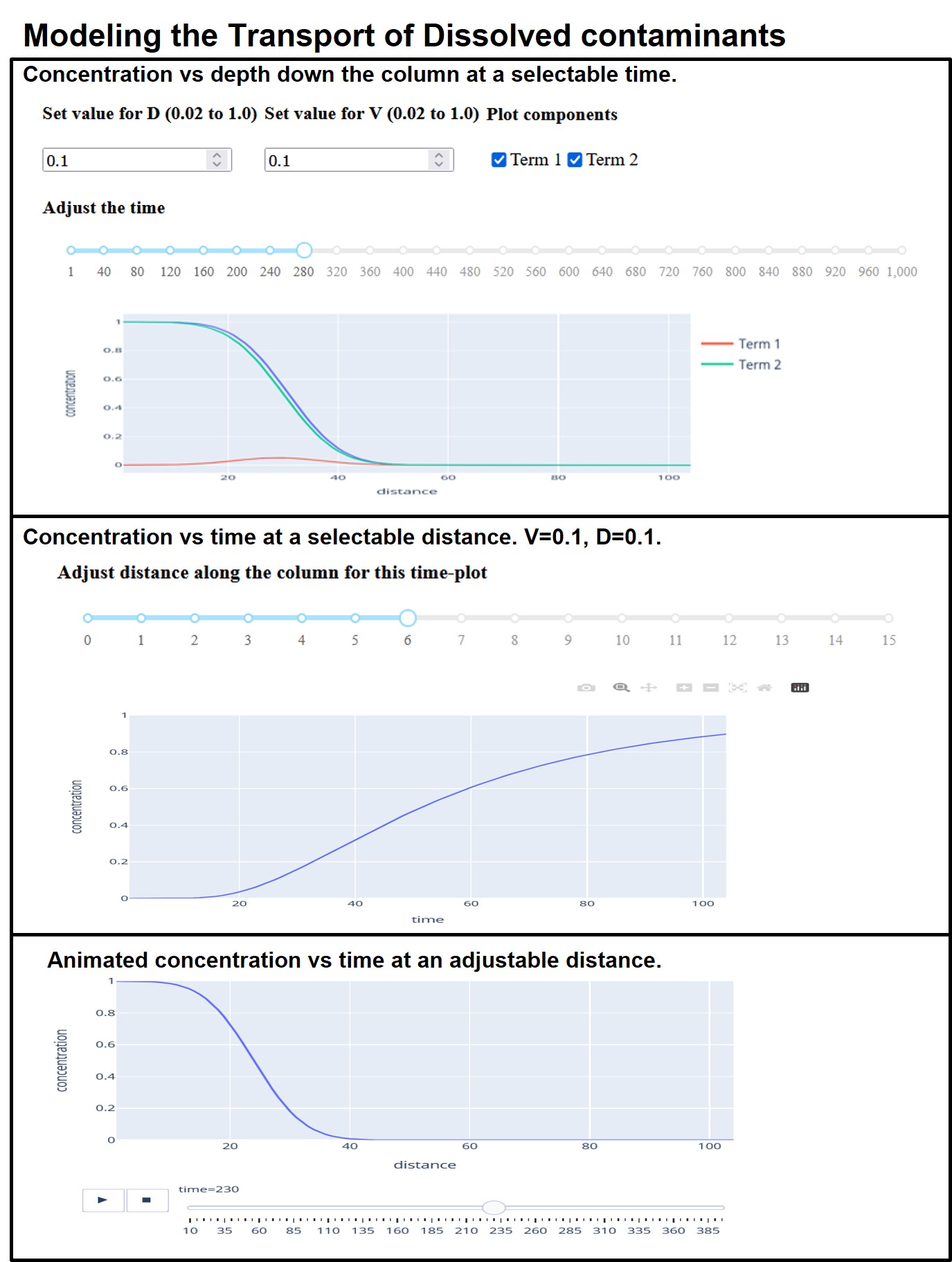EOSC 429
Contents
EOSC 429#
Official course description#
Groundwater Contamination: Contaminant transport processes in groundwater flow systems; aqueous and multiphase transport; mathematical models describing migration and chemical evolution of contaminant plumes; case studies.
Links: >Home, >UBC Calendar, >ubcexplore, > EOAS curriculum map.
OCESE project objectives#
This course could use hydrogeology apps developed for EOAS 325, ideally with learning tasks that make more sophisticated use of the simulations or demostrations. This has not yet occured, but is recommended.
Actions taken#
After discussing options for dashboards or Jupyter Notebooks targeting specific learning objectives in this course, it was decided to build an interactive app enabling exploration of the way a dissolved contaminant dissperses down a column of porous material (working with a column makes this a “1-D problem”.) The concept is normally explored in class using a spreadsheet to carry out calculations at fixed distances down the column, with the result plotted as a curve of concentration vs position along the column at a given (adjustable) time after initiating flow at one end of the column.
A prototype dashboard app was produced as a 1D solute transport visualization aid. The app plots concentration as a function of distance along a 1D column, or at a location along that column as a function of time. Users can adjust velocity and dispersion coefficient, and the contribution from each of 2 components can be compared.
The dashboard was not used but the prototype was deployed on the third party hub https://render.com/. This is slow to load, but it is a free service. The app was still active as of December 2023. The dashboard looks like this with default starting values.

Costs#
Building this app required some facility with Python Math functions and writing code to solve for somewhat more sophisticated equations. A fourth year engineering student did this in roughly 30hrs of work, without additional help, and a third year student with good coding skills could probably handle it with a bit of support.
Lessons learned#
This app has not been used in a course. The lesson learned is that instructors do need to stay keen on the opportunity and build learning activities for class or home-work. They also need to stay engaged during prototyping so that iteration can steer the final result towards a facility that meets their teaching needs and which helps students explore the corresponding concepts.
